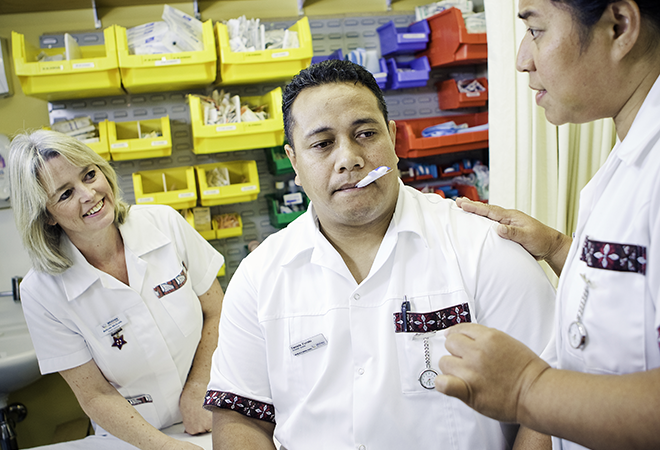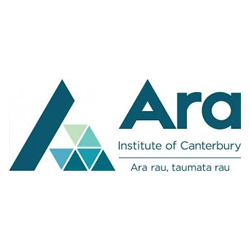
Preparedness for Sudden Change: Lessons from Managing Large-Scale Disruption within a Bachelor of Nursing Community
Status
Completed: 16 September 2012
Project Details
A one-year project completed in 2012, undertaken by Christchurch Polytechnic Institute of Technology, to explore the effects of the 2011 Christchurch earthquake on a tertiary learning community and enable positive contributions to future disaster prevention, mitigation, and preparedness in New Zealand tertiary education organisations.
Aims:
The main aims of the project were to:
- identify and describe the impact of such a sudden, traumatic natural event on the capacity and processes required to deliver a teaching/learning programme within an unstable and changing context
- explore the most appropriate and optimal role(s) for education providers where there is sudden, large scale disruption to the learning community
- determine the most effective ways to minimise disruption to programme delivery and student learning
- provide recommendations for anticipating and actively managing change following disruption in tertiary education institutions to ensure continuity of good teaching practice.
Methodology:
The project used a descriptive/exploratory case study design, focusing on the three phases of response, recovery, and rehabilitation, over a period of 18 months, which involved:
- a review of the literature
- an anonymous survey questionnaire completed by selected academic staff from the CPIT School of Nursing in order to elicit a broader, ‘school wide’ perspective of events in each stage of the disaster
- semi-structured, audiotaped, face-to-face interviews with selected participants from the School of Nursing with key decision-making and/or operational roles related to the BN programme and BN learning community, and staff in the wider organisation whose roles in the disaster response impacted on the BN learning community
- analysis of data obtained from the CPIT administrative and ICT systems, collected in electronic or hard copy form as appropriate. Examining these outputs of decision making, planning, and action increased the rigour of the findings.
Team

Dr Lesley Seaton
Project Lead
Christchurch Polytechnic Institute of Technology (now ARA Institute of Canterbury)
Dr Philippa Seaton
Christchurch Polytechnic Institute of Technology (now ARA Institute of Canterbury)
Judy Yarwood
Christchurch Polytechnic Institute of Technology (now ARA Institute of Canterbury)
Melanie Ryan
Christchurch Polytechnic Institute of Technology (now ARA Institute of Canterbury)Status
Funding
$9,953.00 (excl GST)
Key Findings
The key findings from the project included:
- This project draws on experiences of the CPIT Bachelor of Nursing programme during and following the Christchurch earthquakes of 2010-2011. It provides recommendations for organisations as they develop strategies for preparedness for disaster management.
- Whilst this project began with the goal of looking principally at the teaching/learning community as one with scholastic activity as a primary focus, it soon became clear that in the short-term in a disaster, people are not thinking at all of teaching/learning, an appropriate response. Teaching and learning as a primarily scholastic activity is one that can only take place in a stable and safe context. For this reason, many of the recommendations made relate more to ensuring that the context in which teaching and learning occur, must necessarily be safe, secure and sheltered, in both a physical and emotional sense.
- Many of the stories told, and the recommendations made, focus on the physical and social experience and impact that a major disaster has on people’s lives as a whole. Education – teaching and learning – is only one part of that. The ability to manage and cope in a disaster depends on the capacity of any given community, at a point in time, and this is more complex than following any document-based disaster plan. This project has provided practical advice. It also became evident that community can be seen as both local and, in this case, perhaps even global. One of the most significant features of a major disaster is that it is beyond the capacity of the local community to cope alone.
- It must also be clearly understood that the findings of this project constitute only one perspective of what has and can be learnt from the Canterbury earthquakes. This report does not seek to detail definitive or ‘stand-alone’ findings, there was no aim or goal to answer all questions or provide an absolute framework for how to respond in a large-scale disaster. This project was one of a suite of similar projects that have been funded within Canterbury to explore human responses to the Christchurch disaster and increase our understanding of the social and educational response.
Key Recommendations
The key recommendations arising from the project are based around the three main aims of the project:
Aim 1: Recognise and identify the impact of a sudden traumatic natural event will have on the capacity and processes required to deliver a teaching/learning programme within an unstable and changing context | Encourage personal risk mitigation; offer continued support and flexibility to all staff and students; continue looking back – reflecting on and learning from each event; and ongoing discussions about readiness and the continuing of regular drills and practices.
Aim 2: Facilitate and support the development of the most appropriate roles for staff which optimise the consequences associated with disaster | Safety is always the first priority – ensuring safety can only be achieved through a pre-planned, considered and well-co-ordinated effort. Staff cannot react appropriately if they do not know what to do. It is useful for all staff to be aware of their role in a disaster – and to know how to get themselves, students and colleagues to safety. Helpful safety strategies identified were: first aid equipment should also be kept outside the building as well as inside; consider and communicate the role of ‘floor warden’; develop systems for knowing the whereabouts of colleagues, students and relevant others; ensure there are easily accessible instruments for immediate mass communication; and guarantee there is a well-known post-evacuation strategy.
Aim 3: Discover the most effective ways to minimise continued disruption to the learning community | Plans are not preparedness, but are part of it; initiate and maintain consistent communication; make decisions relating to resumption of programme delivery as soon as possible and ensure all staff know about this; consider teaching delivery alternatives; and, finally every institution must look to its own context, consider its own priorities, and design methods of preparedness which will work for them .